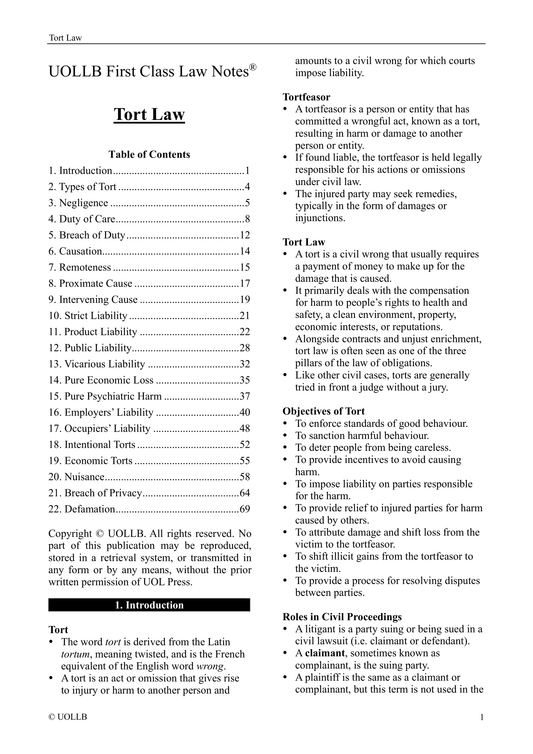Core Principles of Tort Law
Share
The core principles of tort law revolve around the idea of holding individuals or entities responsible for harm they cause to others. Tort law is primarily concerned with compensating victims for injuries or damages and deterring harmful behaviour. Here are the key principles:
1. Duty of Care
The concept of a duty of care is foundational in tort law. It establishes the obligation that a person has to avoid causing harm to others. This duty is based on the standard of what a reasonable person would do in similar circumstances. For instance, a driver has a duty to drive safely to avoid accidents. Professionals like doctors or engineers hold a higher standard of care due to their specialised knowledge and skills. The duty of care is about foreseeing potential harm that could be reasonably prevented, thereby protecting others from risks that are not trivial or far-fetched.
2. Breach of Duty
Once a duty of care is established, a breach occurs if an individual fails to meet this standard. A breach can be an action (e.g., a reckless driver speeding in a school zone) or an omission (e.g., a property owner failing to remove ice from a sidewalk). Establishing a breach involves comparing the defendant’s behaviour to that of a hypothetical reasonable person. If the defendant's conduct falls short of this standard, resulting in a deviation from what is considered safe or appropriate, the duty of care is breached.
3. Causation
Causation in tort law connects the breach of duty directly to the resulting harm. This principle is split into two components: actual causation and proximate causation. Actual causation, or but-for causation, means that the harm would not have occurred but for the defendant’s action or inaction. Proximate causation deals with foreseeability, limiting liability to harm that was a direct and foreseeable result of the breach. This dual requirement ensures that liability is not unfairly extended to remote consequences that could not have been anticipated.
4. Damages
Damages are the monetary compensation awarded for harm suffered due to a tortious act. They are intended to make the injured party "whole" again, to the extent possible. This includes compensating for physical injuries, emotional distress, lost wages, and the cost of repairing or replacing damaged property. The calculation of damages aims to restore the victim to the position they would have been in if the harm had not occurred.
5. Remedies
Beyond damages, tort law may offer other remedies such as injunctions, which are court orders that require an individual to do or refrain from doing specific acts. For example, a court may issue an injunction to stop a company from engaging in harmful environmental practices. Remedies are tailored to the needs of the particular case, providing flexible and appropriate means to address the harm and prevent further damage.
6. Strict Liability
Strict liability applies in situations where fault or negligence is irrelevant; the mere occurrence of certain types of harm triggers liability. This is often applicable in cases involving abnormally dangerous activities, hazardous substances, or defective products. Under strict liability, the defendant is liable if they are responsible for creating the risk, even if all possible precautions were taken.
7. Negligence
Negligence is the failure to meet a standard of care that a reasonable person would observe under the circumstances. Unlike intentional torts, negligence does not involve deliberate harm but rather a disregard or a lapse in the duty to consider the safety of others. Proving negligence requires establishing a duty of care, a breach of this duty, causation, and resulting damages.
8. Intentional Torts
Intentional torts occur when a person deliberately acts in a way that is likely to cause harm. Common examples include assault, battery, defamation, false imprisonment, and intentional infliction of emotional distress. Unlike negligence, intent to harm is a critical element. The law in these cases focuses on both compensating the victims and deterring wilful misconduct.
These principles enable tort law to address a wide array of situations, ensuring justice is served by compensating victims, deterring harmful behaviour, and providing specific remedies for various harms, thereby maintaining social order and responsibility.




























































